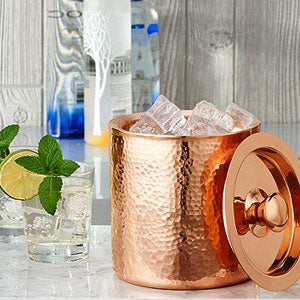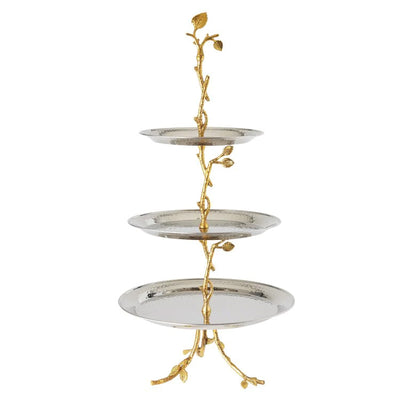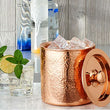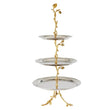How to Choose Wine Glasses
Commonly viewed as party essentials, wine glasses add an air of elegance to any occasion from weeknight dinners to Sunday brunches. Most people just grab a glass, pour the wine, and sip, giving little thought to the liquid and drinking vessel. But there are important differences between glasses made for red wine, white wine, and other spirits and cordials. Before you purchase your next set of wine glasses, learn about the types, shapes, and sizes, and then choose the best style for yourself or to give as a thoughtful gift.
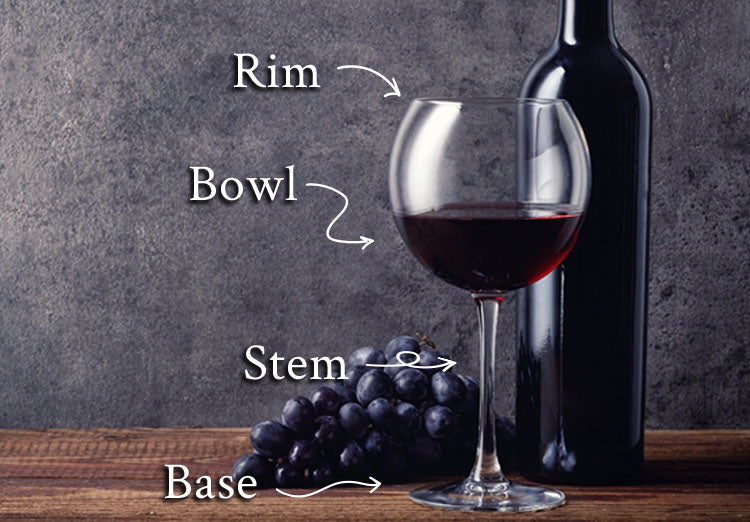
Parts of a Wine Glass
It’s important to know the parts of a wine glass and to understand the terminology. The basic design of a wine glass is essentially the same across nearly all styles from red wine to champagne, but the shape, height, and diameter vary based on the type.
- Base: Also called a foot, this flat circular piece at the bottom of a wine glass provides stability and balance.
- Bowl: This part of the wine glass holds the liquid; the bowl varies most between styles.
- Stem: A long piece of glass that connects the base to the bowl, the stem is the part you hold to prevent touching the bowl.
- Rim: The part that runs around the top of the bowl where the glass meets the lips.
Red Wine vs White Wine Glasses
Red and white glasses may seem interchangeable to those who don’t drink wine often or save indulgence in the grape for special occasions. But the oenophile, and any enthusiast who wants to make an impression, understand the importance of choosing the right glass based on the color and type of wine being poured. It’s the subtle differences in bowl height and width that set red and white wine glasses apart.
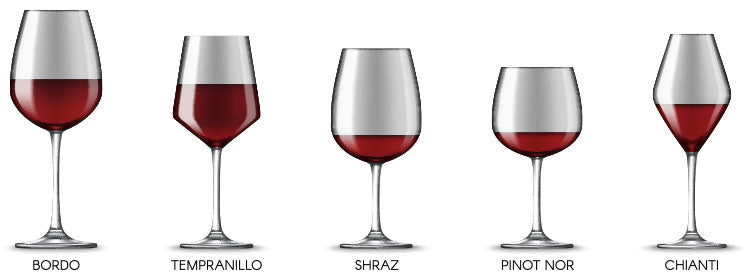
Red Wine Glasses
The bowl of a red wine glass is wide at the bottom and tapers up to the rim. Red wines require more oxygen to smooth out the tang of the tannins and enhance the aroma; the wide bowl allows more air contact and extra room to swirl for aeration. Red wine is bolder than white, and the oxygen mellows out the complex flavors. Different glass styles work better for different red wines.
Bordeaux Glass
The taller height of the Bordeaux glass bowl creates extra space so ethanol can escape before it reaches the nose, leaving the pleasant aroma of the wine behind. Choose a Bordeaux glass for heavy red wines with high tannins.
Use these glasses for:
- Cabernet Sauvignon
- Malbec
- Bordeaux blends
Burgundy Glass
The wide bowl of a Burgundy glass provides space for aromas to accumulate; a thin rim lets the subtle notes hit the tip of the tongue first to detect the depths of flavor. Choose a Burgundy glass for light red wines.
Use these glasses for:
- Pinot Noir
- Dolcetto
- Red Burgundy

Standard Red Glass
This medium glass features a smaller opening that softens the taste of full-bodied red wines but keeps the aroma in the bowl. Choose a standard glass for medium- to full-bodied red wines.
Use these glasses for:
- Merlot
- Chianti
- Shiraz
White Wine Glasses
These tulip-shaped bowls are slenderer than their red cousins, as white wine does not need aeration. White wine glasses taper at the top; aromas gather at the narrow rim to further enhance the taste and experience. A long stem keeps the warmth of the hand away from the bowl as white wine is better chilled. There are three common types of white wine glasses, all of which are also suitable for rosé.

Chardonnay Glass
The larger opening of a Chardonnay glass allows wine to hit the tip and sides of the tongue where the sweetness and acid strike a pleasant balance. Choose a Chardonnay glass for full-bodied white or rosé wines.
Use these glasses for:
- Chardonnay
- Semillon
- Viognier
Sauvignon Blanc Glass
The slender bowl of this white wine glass captures and holds floral and fruity aromas. A delicate U-shape directs wine to the center of the tongue for a smooth feel and a full flavor. Choose a Sauvignon Blanc glass for light- to medium-bodied white wine with fruit or floral essence.
Use these glasses for:
- Sauvignon Blac
- Loire
- White Bordeaux
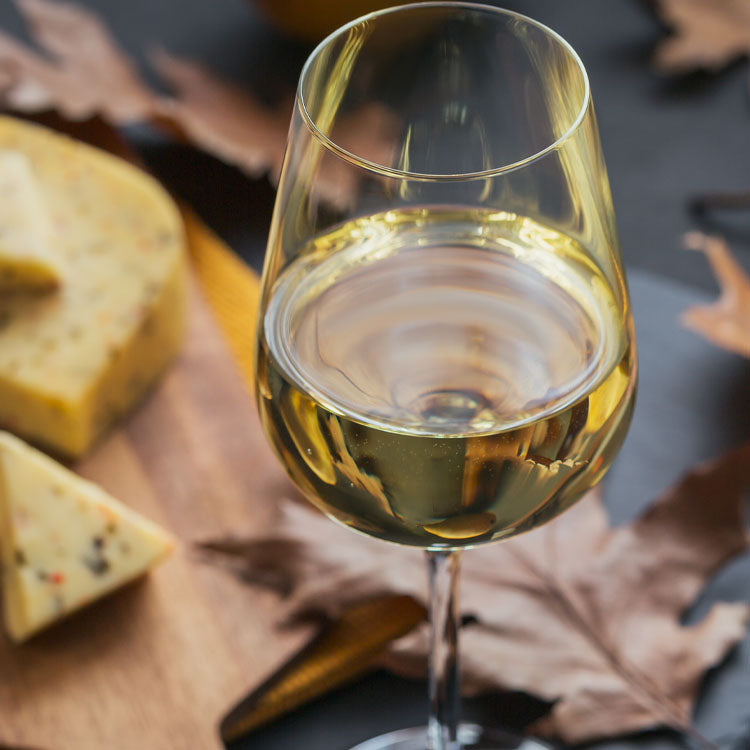
Riesling Glass
The smallest of all the white wine glass types, the Riesling glass features a rounded bowl that narrows toward the top. A small rim guides the wine to the back of the mouth so the sweetness won't overpower the palate. Choose a Riesling glass for sweet white wines.
Use these glasses for:
- Riesling
- Zinfandel
- Sauternes
Universal Wine Glasses
Also called all-purpose wine glasses, universal glasses are made for any type of wine and are fitting for most occasions. The bowl of a universal wine glass is medium in width and height with a tapered rim that complements both red and white libations. These all-purpose glasses are ideal for enthusiasts who like to sample different wines, but don’t want a stemware collection that takes up lots of space in the bar.

Stemless Wine Glasses
A stemless wine glass is a fantastic all-purpose vessel for any type of setting from casual to formal. Though slightly less elegant than a stemmed variety, a stemless wine glass is stable, reliable, and requires no specific holding instructions. These bowl-shaped glasses are suitable for all wines, but since the liquid warms up quicker due to continual contact with the hand, avoid using them for wine that is better served chilled.
Dessert Wine Glasses
Dessert wine glasses are smaller than red or white versions. Dessert wine is very sweet and carries a high alcohol content, so glasses are made for smaller servings. The small size and delicate shape of a dessert glass directs wine to the back of the mouth so the sweetness won't overwhelm. Choose this type of glass for dessert wines including sherry, port, and cordials.
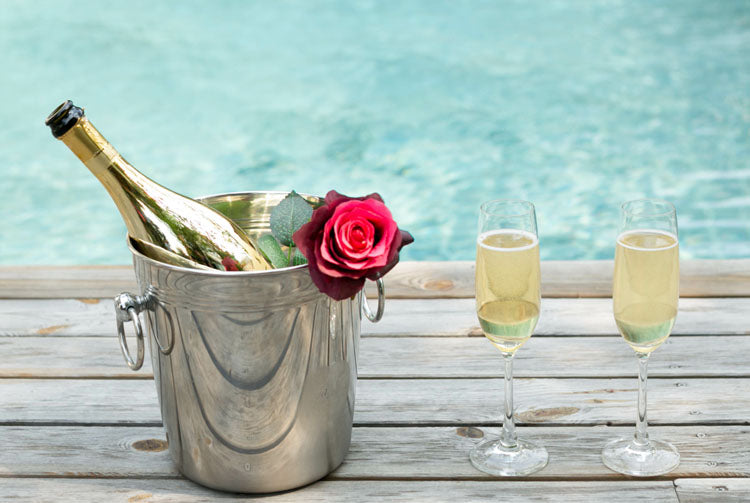
Wine Glasses vs Champagne Glasses
The main difference between wine and champagne glasses is the bowl's height and diameter. Champagne glasses, also called flutes, are tall and thin, which allows the bubbles to expand, rise, and cling to the inside of the bowl. The stems are long and elegant, keeping the fingers from touching the bowl and marring the look of those pretty bubbles with unsightly smudges.
The Wine Glass Bottom Line: Go for Variety
Different types of wine glasses can improve the drinking experience by enhancing a wine’s bouquet and flavor, so opt for a variety and you’ll be prepared for anything. Choose a set of red wine glasses for your Merlot and Cabernet Sauvignon; select a white wine set for Chardonnay and Riesling; opt for a set of small glasses for dessert wines; add champagne flutes for extra-special celebrations.
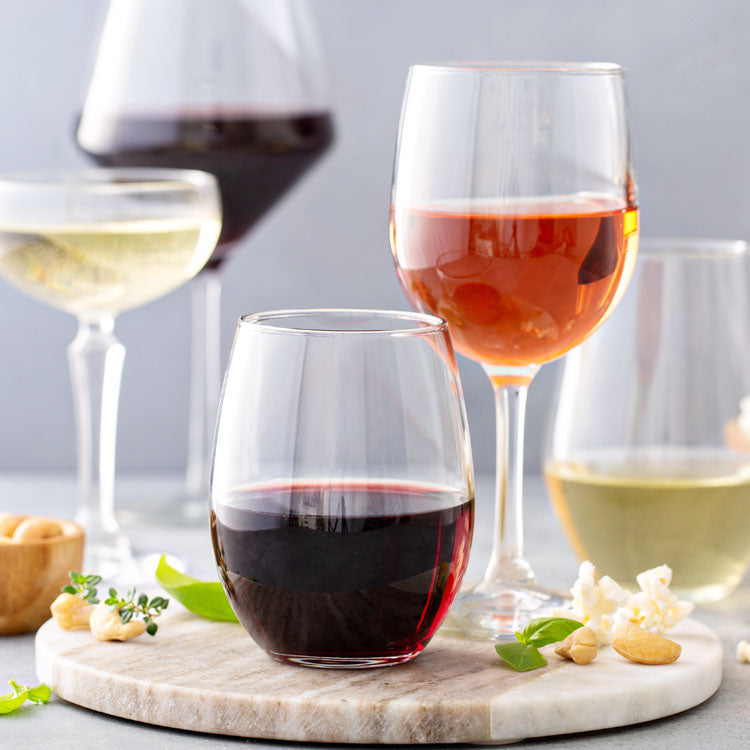
Now that you know how to choose the right stemware for every type of grape, learn the best way to savor and enjoy your wine or explore our cocktail glass buying guide and stock your bar for any occasion.


